Leafhoppers are wedge-shaped insects, whose wings cover their bodies much like a roof is pitched over a house. They measure between 1/8 to 1/4 inch long (0.3 to 0.6 cm) and vary in color from green, to brown, to tan. Some sport a blend of colors including blue, gold, and red. Their spiked hind legs enable the leafhopper to move sideways like a crab or hop to safety when frightened, hence the name leafhopper.
These unique looking insects feed on a wide variety of vegetation, including grasses, shrubs, vegetables, and fruits. Some leafhoppers’ names include their preferred vegetation, i.e. potato leafhopper, beet leafhopper, rose leafhopper, etc. They can be quite destructive as they suck the sap out of plant tissue and spread pathogens through their saliva.
If you have yet to observe leafhoppers in your garden, stay tuned. They are everywhere. According to the Illinois Natural History Survey, there are more species of leafhoppers worldwide than all species of birds, mammals, reptiles, and amphibians combined.[1]

Leafhopper, Spittlebug, or Planthoppper?
The names leafhopper, spittlebug, and planthopper are often used interchangeably, however, they are different insects. The adult spittlebug, also called a froghopper because its face resembles a frog, has a wider body than that of a leafhopper. The spittlebug nymphs cover themselves in spittle and thus, are appropriately named spittlebug. On the other hand, the planthopper’s wings create a sharper peak than those of the leafhopper and spittlebug, and planthopper nymphs are covered in white cotton-like filaments.
Life Cycle
Adult leafhoppers overwinter in plant debris or in nearby uncultivated areas. When they emerge in the spring, the females will deposit between one and six extremely small eggs per day in the stems or larger veins of leaves causing pimple-like wounds on the plant. The nymphs, which look like adult leafhoppers but are smaller, lighter in color, and wingless, will emerge within two weeks and immediately begin feeding on sap from the leaves and stems of the host plant. The nymphs go through five instars (stages) before fully developing into adults. The process takes between two and seven weeks, depending on the species. On occasion, the skins shed by the nymphs can be seen attached to the underside of leaves. Leafhoppers complete one to five generations each year.
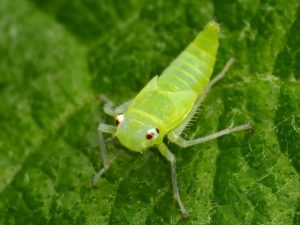
Damage
The damage caused by these fascinating insects should not be underestimated. Leafhoppers, both adults and nymphs, can damage a wide variety of plants, especially if present in large numbers. The damage inflicted depends on the species, but can include plant piercing during egg-laying, sucking the sap from plant tissue, and the destruction of chlorophyll, which is the green substance that makes it possible for plants to make food from carbon dioxide and water.[2] Most damaging, however, is that leafhoppers are vectors that carry harmful pathogens, like Aster yellow and curly top virus, which are transmitted via the insect’s toxic saliva. This results in leaves that yellow, stipple, curl, shrivel, wilt, or drop off. Hopper burn is another condition that causes the edges of leaves to appeared burned. Like aphids, leafhoppers also produce honeydew, which is a sticky substance that attracts ants and promotes the growth of sooty mold.
This article contains affiliate links. If you make a purchase using one of these links, I will receive a very small commission at no additional cost to you, and it will help me maintain this website. Rest assured, I only recommend products I actually like!
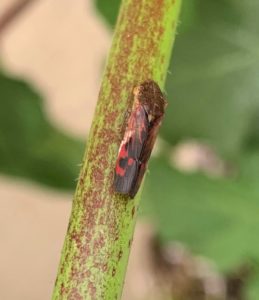
How to Treat Leafhoppers
Catch and Smash. Even though leafhoppers are quick, it is possible to catch them by hand! Instead of dispatching them in a container of soapy water like you would for other insects, you will need to smash them between your fingers, otherwise, they will escape when you open your hand. For this reason, you may want to wear gloves.
Organic Insecticidal Soap works best during the egg and nymph stages because the adult insects excrete a substance that contains brochosomes, which are wax-like granules. The brochosomes are then spread over the insect’s body using the spiked hairs on their hind legs. The coating serves to protect the insect from water, excretions, and insect sprays. In addition, adult leafhoppers are difficult to target with insecticidal sprays because they can quickly jump to safety when approached.
To make your own organic insecticidal soap, mix 1 to 2 teaspoons of a Castile soap like Dr. Bonner’s or Dr. Wood’s in one quart of water (or 1 tablespoon in one gallon of water). Do a test spray on one leaf and wait 24 to 48 hours to see how the plant responds. If it shows signs of damage, dilute the mixture and perform another test spray. Spray the entire plant, including the underside of leaves, in the cool of the evening or early in the morning. Otherwise, the combination of the spray and sunlight could burn the plant. Repeat every 7 days.
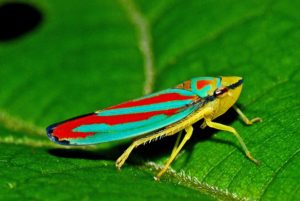
Neem oil is another organic product that works well on eggs and nymphs by interrupting the leafhopper’s life cycle. Add 1 teaspoon of neem oil that contains Azadirachtin, the naturally occurring compound that makes the oil more effective. (Some premade sprays are made with neem oil that does not contain this important ingredient.) Add 1/2 teaspoon of Castile soap like Dr. Bonner’s or Dr. Wood’s to 1 quart of water. Mix well. Do a test spray on one leaf and wait 24 to 48 hours to make sure the mixture is not too strong. If the leaf is damaged, decrease the amount of neem oil. If there is no damage, spray the plant, making sure to cover both sides of the leaves. Do not apply during the day as the combination of sun and neem oil can burn the plant. Instead, apply during the cool early morning hours or in the early evening. Repeat every 7 days.
When broader applications of either the organic insecticidal soap or the neem oil spray are necessary, I use a 48-ounce pump spray bottle like this one.
Beneficial insects like parasitic wasps, certain spiders, green lacewings, assassin bugs, and ladybugs will target leafhoppers. You can purchase beneficial insects or entice them to come to your garden by providing plants with nectar and pollen. In addition, birds and lizards can also help keep the leafhopper population down.
Diatomaceous earth. Sprinkle food-grade diatomaceous earth, also known as DE, on plants to deter leafhoppers from feeding. If this naturally occurring sediment composed of microscopic fossils, comes into contact with young leafhoppers, it will irritate their exoskeleton, causing it to dehydrate. However, take caution when applying it as you do not want to inhale the powder or get it into your eyes as it may cause irritation. Take care not to apply DE on flowers since it will harm pollinators. You will need to reapply DE if it gets wet.
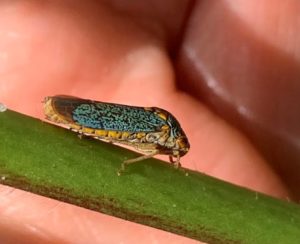
How to Prevent Leafhoppers
Remove overwintering sites. The most effective way to treat leafhoppers is to discourage their presence in your garden. Start by removing plant debris and other items from the garden and adjacent areas if possible, where leafhoppers may overwinter.
Row covers. The use of row covers will limit leafhoppers’ access to plants. This is very effective for other garden pests as well.
Leafhoppers may be one of the largest groups of insects on the planet, but they don’t have to take over your garden. With some preventative measures and organic treatment options, you can keep these sap-sucking, disease-carrying insects at bay.
Thank you for reading this article! If you found it helpful, please consider sharing it with others via email or social media!
[1] Leafhoppers (Hemiptera: Cicadomorpha: Cicadellidae), accessed 5-7-21, https://www.inhs.illinois.edu/collections/insect/data/leafhoppers/
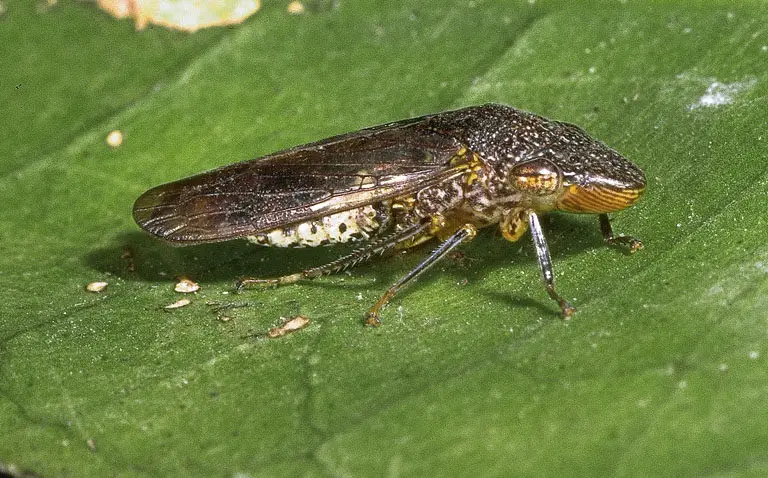
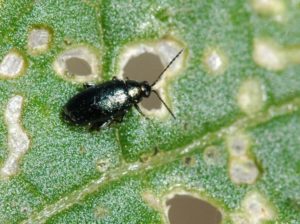
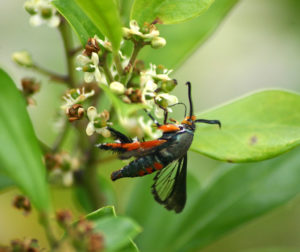
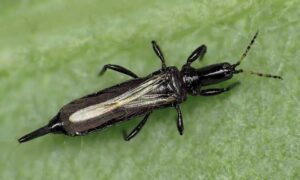

Friend, every time I search for an answer this morning your great blog shows up! I appreciate your insightful, thorough and helpful posts! God bless your blog and your garden.
Thanks so much Ginger! Good to know that my site is showing up in the algorithm! So appreciate your encouragement and trust you are doing well! God bless you, friend!